
Pioneering chemical-free solutions in innovative cleaning technologies
That's how many chemicals are used in cleaning workspaces. Simple places such as offices only use a few, but the number stacks up as we enter industries such as manufacturing and healthcare. In these workspaces thousands of disinfectants, sterilisation agents, and cleaning solutions can make up most of the chemicals.
One alternative to using excessive chemicals is our CtrlFlow solution. CtrlFlow uses innovative technology to combine water and salt to create an endless supply of 100% natural liquid solution. By making the switch to CtrlFlow for your cleaning, you can make big strides in reaching your sustainability targets.
CtrlFlow is easily transferred and dispensed into any type of buckets, sprayers, or container, so that anyone can start using it right away. Not only is it completely hypoallergenic and safe to use on any surface, it's also deceptively powerful and proven to be up to 100 times more effective than bleach.
Many people are exposed to a variety of substances at work (e.g. chemicals, fumes, dusts, fibres) which can, under some circumstances, have a harmful effect on their health. These are called ‘hazardous substances’.
If exposure to a hazardous substance is not properly controlled it may cause ill health in a number of ways.
The substance may cause harm by:
Too much being taken into the body through breathing
Being absorbed through the skin
Being swallowed
Acting directly on the body at the point of contact, e.g. the skin.
Many cleaning substances are hazardous due to their corrosive nature, which can cause skin and eye burns if they come into contact with the body. Without proper precautions, these substances may lead to dermatitis (dry, sore, flaky skin) or other skin irritations, as well as asthma and respiratory issues.
Therefore, it is important to know in advance how to protect the health of people working with hazardous substances and also of other people who may be affected by the work being carried out.
Mixing certain substances can lead to harmful chemical reactions. For instance, combining cleaning products containing bleach with acidic toilet cleaners or ammonia can release toxic gases.
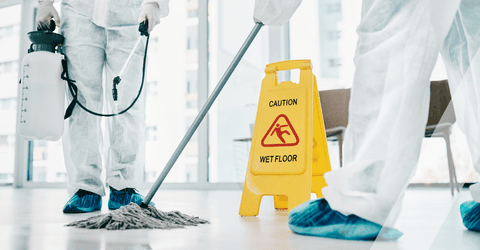

That is how much more likely someone who regularly uses cleaning products with volatile compounds is to develop asthma.

The amount of chemicals that are used in the manufacturing of conventional cleaning products each year

The percentage of cleaning and disinfecting products that CtrlFlow can replace
Eliminating all chemicals from cleaning isn't realistic because certain chemical agents are essential to achieving suitable levels of cleanliness and hygiene. These agents play a crucial role in disinfecting surfaces, eliminating pathogens, and ensuring overall sanitary conditions, especially in environments such as hospitals, kitchens, and public restrooms.
However, there are greener, cleaner, and safer alternatives available that significantly reduce the health and environmental risks associated with conventional cleaning products. An example of this is water-based solutions such CtrlFlow and electro-chemically activated water (ECA) and Stabilized Aqueous Ozone (SAO). These solutions reduce the number of chemicals used in everyday cleaning whilst simultaneously reducing your carbon footprint and creating a cleaner work environment in the process.
By choosing these greener options, individuals and organisations can maintain high cleanliness standards while also protecting human health and the environment.
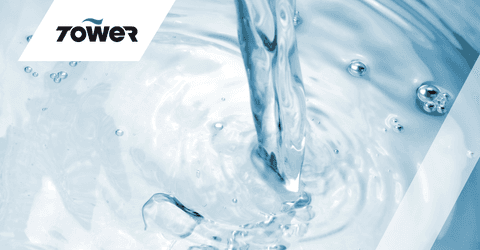
Understanding the impact of harmful chemicals in cleaning products is crucial, as their widespread use can pose significant health risks and environmental challenges. We explore some of the most common risks associated with cleaning chemicals.
The EH40/2005 Workplace exposure limit document from HSE contains the list of workplace exposure limits for use with the Control of Substances Hazardous to Health Regulations 2002.
WELs are set in order to help protect the health of workers. WELs are concentrations of hazardous substances in the air, averaged over a specified period of time.
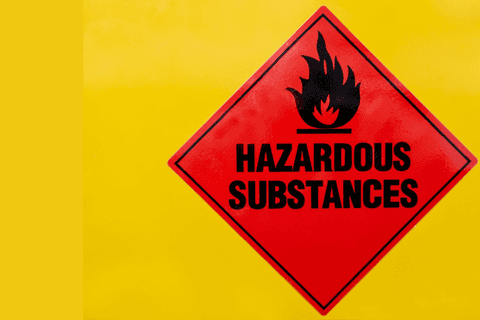
Providing necessary training for employees is crucial when it comes to the safe handling of potentially harmful cleaning chemicals. Proper instruction equips workers with essential knowledge on the safe handling, storage, and disposal of these substances, reducing the risk of accidents and dangerous exposure.
Training should cover proper ventilation techniques, correct use of personal protective equipment (PPE), understanding safety data sheets (SDS), and protocols for responding to spills etc. It is important to include regular refreshers and updates to ensure that employees remain informed and vigilant.
Incorporating natural solutions into cleaning practices not only promotes environmental sustainability but also mitigates the risks associated with harmful chemicals. Substituting conventional cleaners with natural alternatives, such as ECA water and SAO, reduces the exposure of workers to potentially hazardous substances.
These solutions contain natural disinfectants and detergents, effectively cleaning surfaces without compromising the health and safety of employees. Adopting eco-friendly cleaning practices also helps your business aligns with sustainable working practices, helping to make your workplace both greener and cleaner.
When exposure to cleaning chemicals cannot be completely eliminated, it is essential you ensure workers have access to appropriate personal protective equipment (PPE) to fully protect them when handling cleaning chemicals.
Employers must provide PPE such as gloves, goggles, respirators, and protective clothing tailored to the specific hazards of the chemicals being used. Properly fitted and maintained PPE forms a crucial barrier against exposure to harmful substances, reducing the risk of skin irritation, respiratory issues, and other potential health effects.
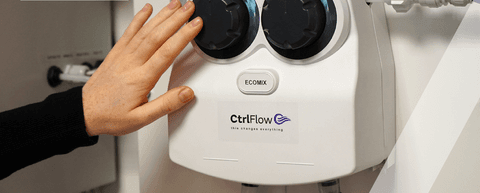
CtrlFlow represents a shift in how we see cleaning. CtrlFlow uses innovative technology to combine water and salt. This creates an endless supply of 100% natural liquid solution.
By applying a small electrical current to a specialised electrolysis cell CtrlFlow generates a hypochlorous acid and sodium hydroxide combined solution with just water and salt. Depending on the task at hand, CtrlFlow can generate three different types of solution to use.
This natural solution is not only completely hypoallergenic and safe to use on any surface, but it's also deceptively powerful and proven to be up to 100 times more effective than bleach.
We're asking cleaning companies around the world to join us in challenging decades of cleaning traditions that use synthetic and environmentally damaging chemicals.
Unlike traditional cleaning and disinfecting products such as bleach, CtrlFlow produces a natural, and therefore practically odourless solution.

"CtrlFlow helps our environmental goals and we only need one product for the entire cleaning process."
- P&O Cruises
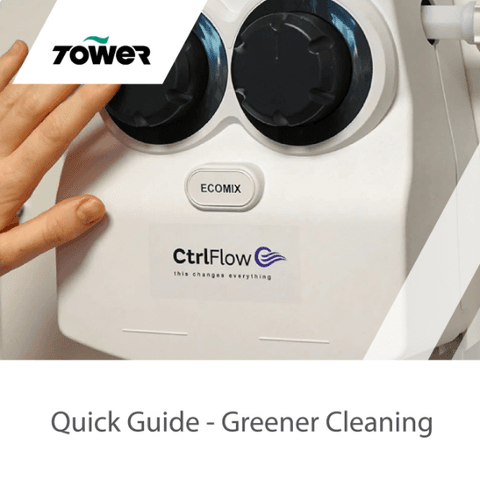
How greener cleaning solutions such as ECA water can support your business.

How greener cleaning solutions such as ECA water can support your business.
When you choose a cleaning and hygiene distributor such as Tower, you are choosing a partner dedicated to sustainable hygiene solutions that are environmentally safe for wide industry usage. As a single-source supplier, what might start as sustainable cleaning and hygiene can transform your whole supply chain, bringing in cleaner, safer and more sustainable practices throughout.
Introducing new cleaning technology to a workforce takes time and training. But once done, you can immediately start integrating systems into your cleaning rotation. We can help you adopt new solutions with training and guidance and create cleaner, safer workplaces.
Sustainability is at the core of what we do, and we want to help others on their journey to greener cleaning that protects both workers and the environment.